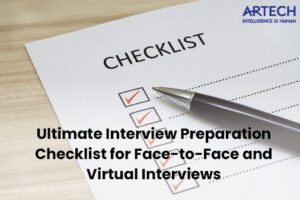
When we think of developers, we often picture technical experts seen as logical problem-solvers, not creatives.
While that stereotype has never been entirely accurate, the rise of creative coding careers in AI is changing that perception.
Creative coders use code to build visuals, sounds, and interactive installations that connect with users emotionally. That’s why many now call them ‘vibe coders.’
As AI automates more boilerplate coding tasks, vibe coders—developers who blend creative coding with AI, machine learning, and generative algorithms—are redefining the future of software development.
They create dynamic, evolving experiences that feel alive and emotionally expressive. A prime example is the PlayStation 4 game Dreams, where creators build unique narratives, moods, and atmospheres that resonate deeply with players.
This shift highlights how coding jobs with creative freedom and unconventional IT careers are gaining importance in the current tech landscape.
Beyond the Meme: The Real Work of a Vibe Coder
The job market today values uniqueness more than ever. Imagine creating an iterative resume with ChatGPT featuring animated sections, responsive visuals, and adaptive soundscapes that tell your personal story.
Sounds enchanting, right? It’s the kind of portfolio that gets noticed.
This is the work of a vibe coder: transforming something static and ordinary into an interactive, captivating experience.
While vibe coding is currently trending as a meme in the tech world, it’s much more than that. It represents a new wave of coders who blend technical skills with artistic vision.
Why “Coding Jobs with Creative Freedom” Are on the Rise
Initially, the gaming industry was easily impressed by high specs and graphics. But as high-tech became the norm, gamers found themselves drawn to games that offer storytelling and adventure, like GTA 5 or The Last of Us.
This change in gamer preferences meant changes in coding, too. Employers are now focused on crafting meaningful player experiences, rather than repetitive level design.
Beyond gaming, creative coding is also powering interactive EdTech platforms, AI-generated visuals that respond to music, and immersive theater experiences all examples of how the industry is opening up coding jobs with creative freedom.
In March 2025, Y Combinator reported that a quarter of the W25 startup batch have 95% of their codebases generated by AI, as covered by TechCrunch. This shift is changing the nature of engineering work. Startups are leveraging AI to automate much of their code generation, which enables engineers to focus more on creativity, problem-solving, and guiding the development process.
What Vibe Coders Actually Build in the Real World
The Dataland AI Art Museum is one of the first spaces dedicated entirely to AI-generated art. Founded by Refik Anadol and Efsun Erkiliç, this immersive museum merges human imagination with machine creativity to showcase works like the Large Nature Model, where data from ecosystems like rainforests and glaciers is turned into stunning multimedia art.
This approach mirrors what vibe coders do. So, what exactly do they build in the real world?
- Generative art: Using libraries like p5.js or Processing, vibe coders generate visuals that evolve in response to data and user input. These pieces of art can be anything from reactive installations at museums to digital art that changes based on the time of day or user behavior.
- AI-driven creative tools: Tools that use GPTs to generate creative content, from poems and short stories to visual art, based on user input or predefined parameters.
- Immersive websites and personal storytelling portfolios: With libraries like Three.js and Spline, vibe coders bring stories to life through immersive, 3D websites, or interactive portfolios.
- Tiny AI-powered web apps: Vibe coders also build smaller, AI-powered web apps that serve fun or poetic purposes. Think AI-generated haikus, vibe-based playlists that adapt to your mood, or interactive personality quizzes.
Essential Skills for Unconventional IT Careers Like Vibe Coding
Vibe coding calls for more than a typical computer science curriculum.
Here are some key skills you need for creative coding careers:
1. Prompt Engineering and AI Collaborations
- Vibe coders often team up with advanced AI tools like GPT-4, Claude, and Copilot, using them to speed up the coding process
- The skill of prompt engineering is essential to ask the right questions to get AI to generate unique content that fits the coder’s vision
2. Creative Frameworks Like p5.js, Three.js, and SvelteKit
- Frameworks like p5.js and Processing are a vibe coder’s playground for creating interactive art and animations that feel alive
- If you’re aiming for 3D visuals or web-based interactive design, Three.js is the go-to tool, allowing developers to create stunning graphics
- For those looking to build fast, reactive web applications, SvelteKit lets vibe coders bring both creative elements and smooth user experiences to life in the browser
- Example: A coder could use Three.js to build a 3D model of a futuristic city that users can navigate, with real-time data driving the changes in the scene
3. Visual Prototyping Tools Like Framer, Spline, and Figma-to-code
- Tools like Framer and Spline offer intuitive interfaces that let vibe coders design interactive experiences without diving into code right away
- With Figma-to-code, coders can easily turn visual concepts into fully functional, live projects
4. Aesthetic Intuition (color, motion, narrative)
- Vibe coders take the time to think about how small details, like a color change or a subtle animation, can make a huge impact on how users interact with their creations
- Example: A coder might design a landing page where the background color shifts based on the user’s scroll depth, with the animation gradually changing to match the flow of a story or message
How to Start Building Your Vibe Coder Portfolio (Even If You’re New to Coding)
Creating proof of work can feel intimidating when you’re trying something new, but building a vibe coder portfolio is easier than ever, thanks to AI.
The key is to focus on execution and taste, showing what you can create, not just listing what you’ve done in a resume. Here are a few steps to get you started:
- Use ChatGPT or Claude to generate rough boilerplate code. Write the basic structure for things like a music visualizer or a simple generative art project with these AI tools while you focus on adding your creative touches.
- Remix existing p5.js sketches or experiments on OpenProcessing. There are already numerous creative coding projects on OpenProcessing. Remixing them by changing colors, adding new animations, or tweaking the code is a great way to practice and learn.
- Start with “microprojects”. Small, manageable projects allow you to experiment without getting overwhelmed. For instance, build a visual timer that changes color as time passes or a mood board website that pulls images based on specific keywords.
- Share your work publicly. Platforms like GitHub, CodePen, and even social media sites like X (formerly Twitter) are perfect for showcasing your projects.
Why Vibe Coding Is a Viable Career Path
A survey conducted by Stack Overflow concluded that around 72% of all developers supported the use of AI tools in development. This signals a growing demand and optimism within the industry in integrating AI into standard development cycles.
Due to this, you’ll notice job postings for Creative Technologist, AI Interaction Designer, and Generative UX Engineer are showing up more and more in job portals.
The merge of coding and creativity is also evident in the tools we use every day. Take Replit’s Ghostwriter for example that helps you write code faster by offering smart AI suggestions.
Figma’s Dev Mode is another example that makes it easier for designers and developers to team up and turn creative ideas into real projects using AI.
And if you want to build AI-powered apps without getting lost in the tech, there’s Vercel’s AI integrations to get you started.
You’re Already Vibe Coding If You’re Building for Expression, Not Just Function
Here’s the truth: you don’t need a fancy job title to call yourself a vibe coder. If you’re building projects that connect on an emotional level, you’ve already started your journey in a creative coding career.
Not sure where to begin? Start small. Create something simple but meaningful. And read our latest blog on Top Jobs of the Digital Era to find high-demand careers where innovation and technology come together.
This content is crafted with care by Artech Staff Authors. While it reflects our commitment to quality and accuracy, please note that it is not authored by industry experts. We aim to offer valuable and engaging information, and for more specialized or technical advice, we recommend consulting with professionals in the relevant field. If you have any concerns or require further assistance, please contact us at support@artech.com. Thank you for trusting Artech as your source of informative content.








